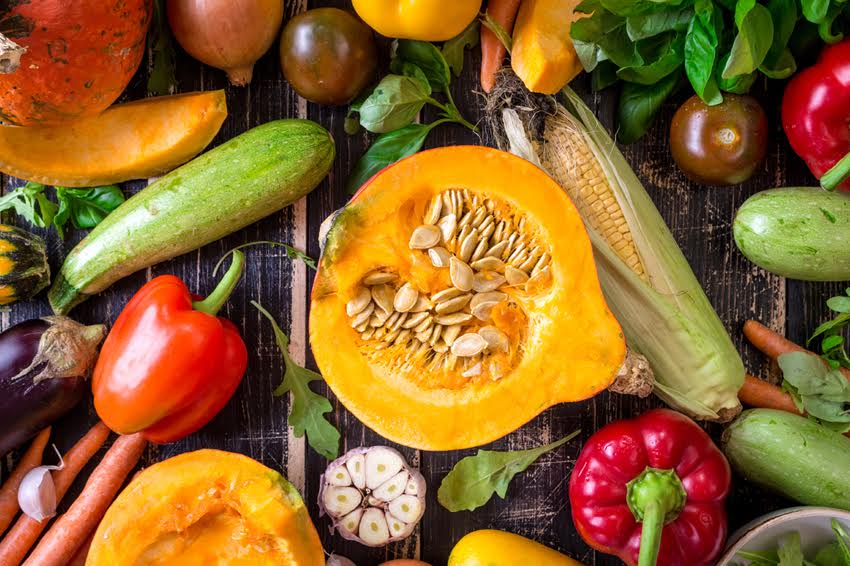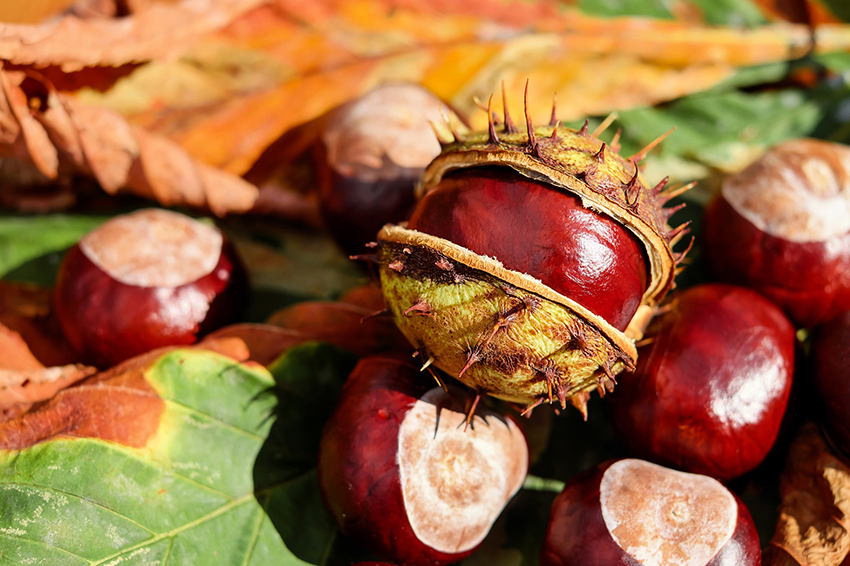Fall is upon us and it’s a season full of nutrition and delicious fruits and vegetables. When it comes to stocking up on all the nutrients your body needs, this season definitely delivers. Get your creative hat on and mix and match them for a whole new flavor experience! With colors of red, orange, green and yellow, the fall fruits and vegetables are sure to delight your eyes and taste buds.

Sticking with seasonal fruits and vegetables is easy on your wallet to give you peace of mind. When you eat fruits and vegetables according to the season, you’re supporting the local farms when you pick ones that grow in your area or during this time of year. It’s also a way to enjoy new fruits or vegetables every time the season changes. But we know that you might have to buy elsewhere when it comes to satisfying your craving for exotic fruits such as bananas, pineapples and mangoes year round.
Now that the days are getting colder, eat a diverse diet that satisfies your daily vitamin and mineral intake. There might not be much to choose from in your supermarket’s produce section, but don’t panic! When you know how to pair fruit and vegetables intelligently, you’re less likely to experience any deficiencies. Fall is a season that’s full of fruits and vegetables that are packed with nutrients.
Take notes, because we’re giving you all the must-have fruits and vegetables on your shopping list this fall!
Fall vegetables are high in beta-carotene, a type of vitamin A you’ll find in carrots and all kinds of squash (including pumpkins). Use it to your advantage! This vitamin gives your body the mega boost it needs.

October:
Beets (US) / beetroots (UK), bell peppers (US) / sweet peppers (UK), broccoli, cabbage, carrots, celery, corn (US) / maize (UK), fennel, Jerusalem artichokes, leeks, lettuce, mushrooms, onions, parsnips, potatoes, pumpkins, radishes, rutabagas (US) / swedes (UK), spinach, squash and Swiss chard.
November:
Carrots, cabbage, celery, endives (US) / chicories (UK), fennel, Jerusalem artichokes, lamb’s lettuce, leeks, mushrooms, parsnips, potatoes, pumpkins, radishes, rutabagas, spinach and squash.
December:
Cabbage, beets, carrots, celery, lamb’s lettuce, leeks, mushrooms, onions, potatoes, pumpkins, shallots, squash and yams.
Fall is also a season that’s loaded with nuts; especially walnuts, which contain heart-healthy omega-3 and lower bad cholesterol. Chestnuts also grow in abundance this time of year and are high in vitamin A and potassium. Cut them open and bake them for 20 minutes to enjoy all the flavor inside.

October:
Apples, avocados, bananas, blackberries, chestnuts, coconuts, figs, grapes, hazelnuts, kiwis, lemons, mandarin oranges, papayas, pears, persimmons, plums, quinces, redcurrants, tomatoes and walnuts.
November:
Apples, avocados, bananas, chestnuts, clementines, dates, grapefruits, lemons, mandarin oranges, oranges, papayas, pears, persimmons, pineapples, pomegranates and walnuts.
December:
Apples, avocados, chestnuts, clementines, dates, grapefruits, kiwis, lemons, lychees, mandarin oranges, oranges, papayas, pears, pineapples, pomegranates and walnuts.
There are so many nutrient-packed gems you can use to whip up soups, fruit purées and steamed vegetables that are sure to tickle your taste buds this fall. Load up your basket now to get an extra boost for your FizzUp workouts!
Join the 7 million users already registered on FizzUp
Join us